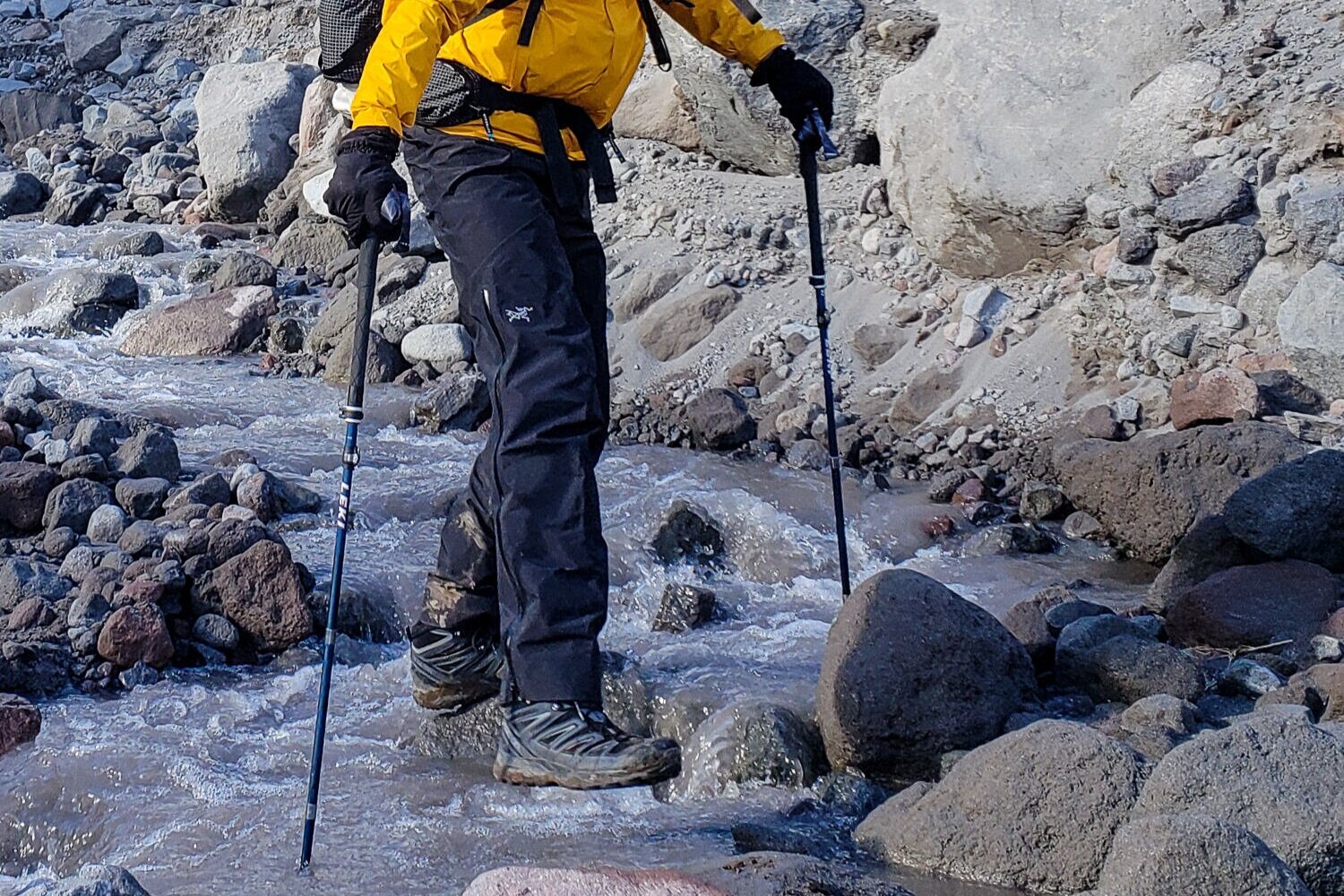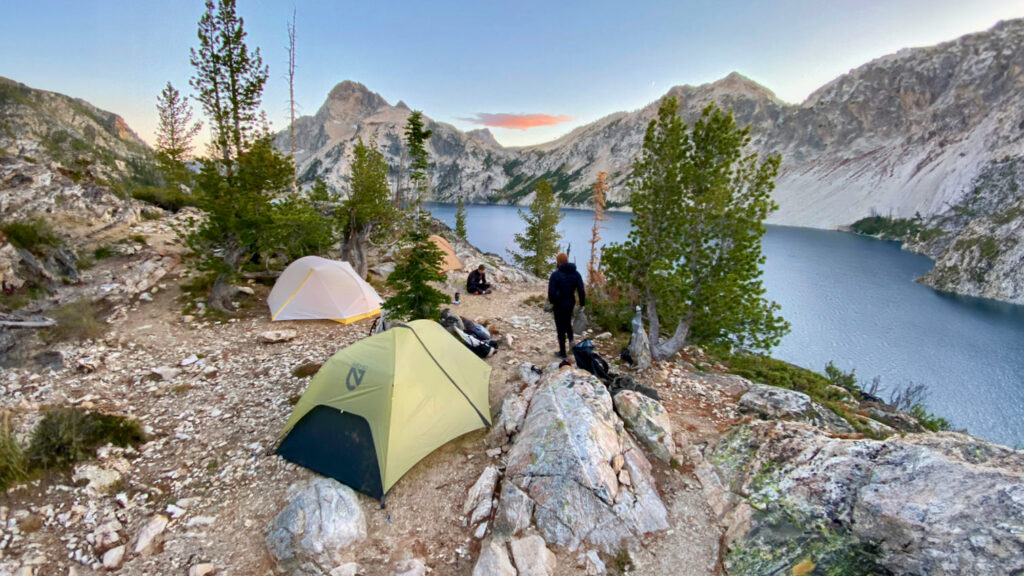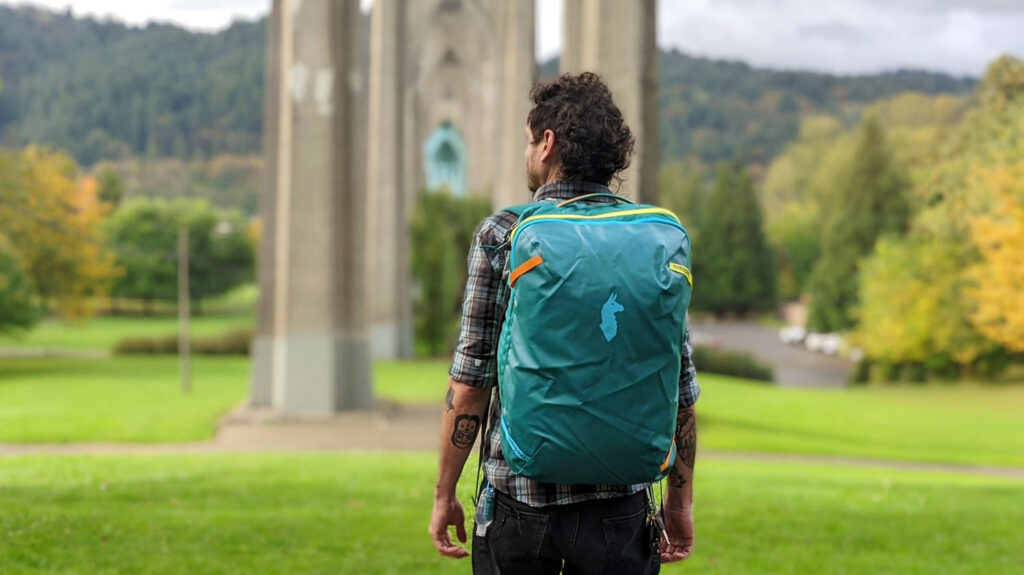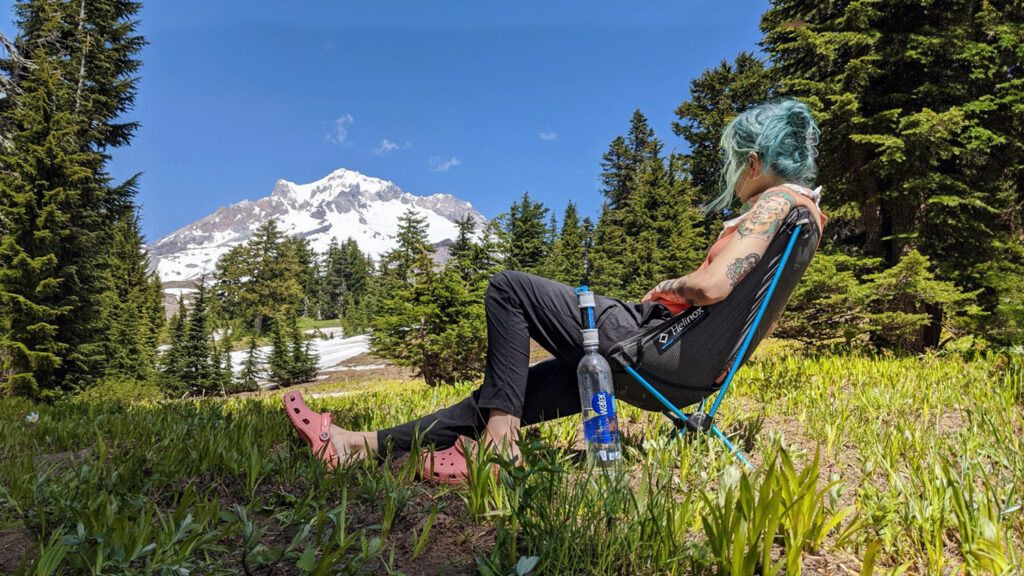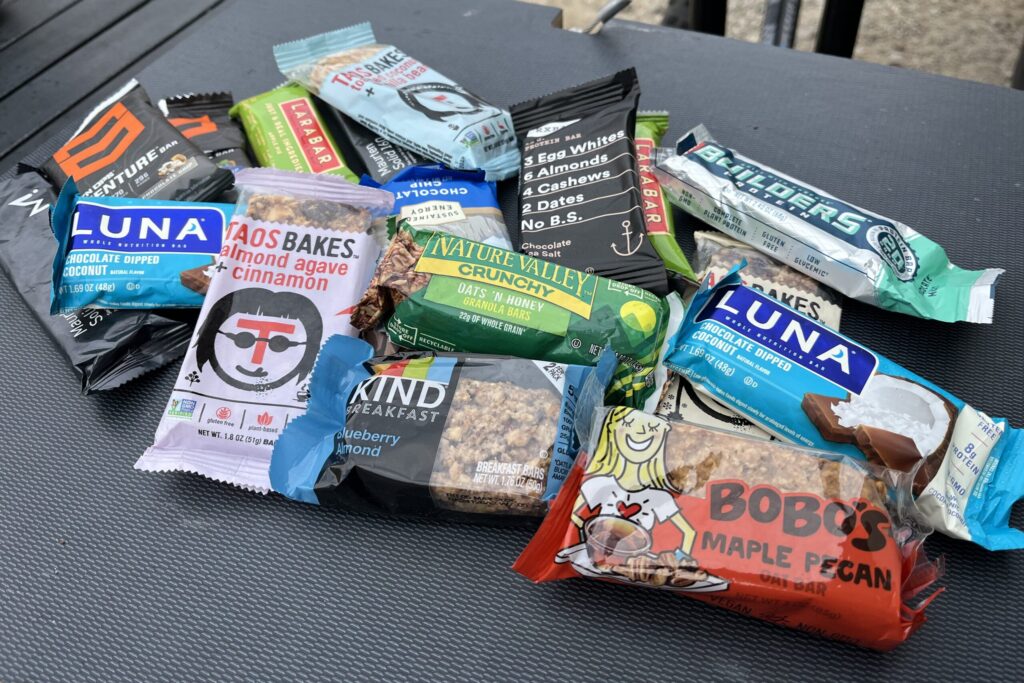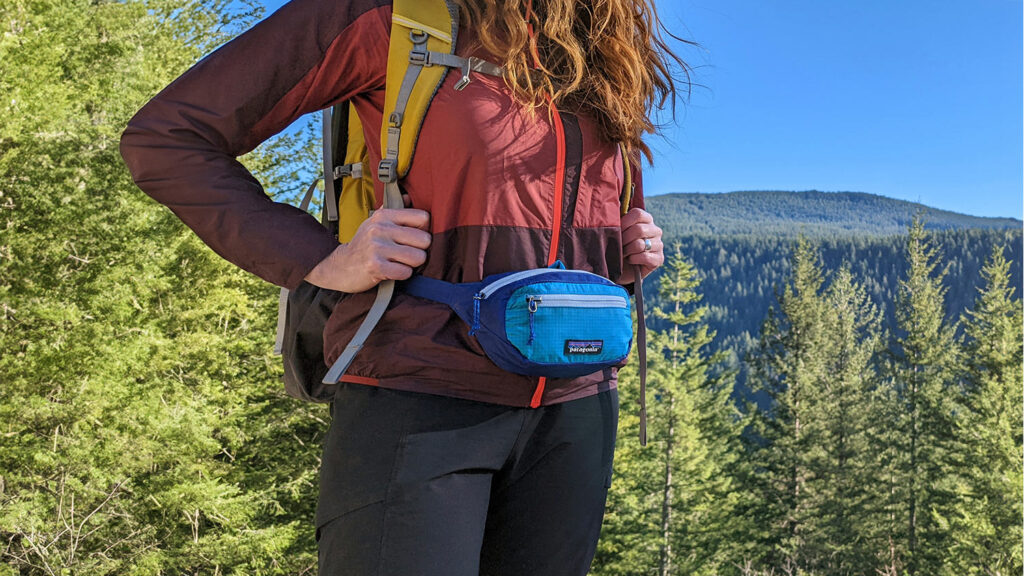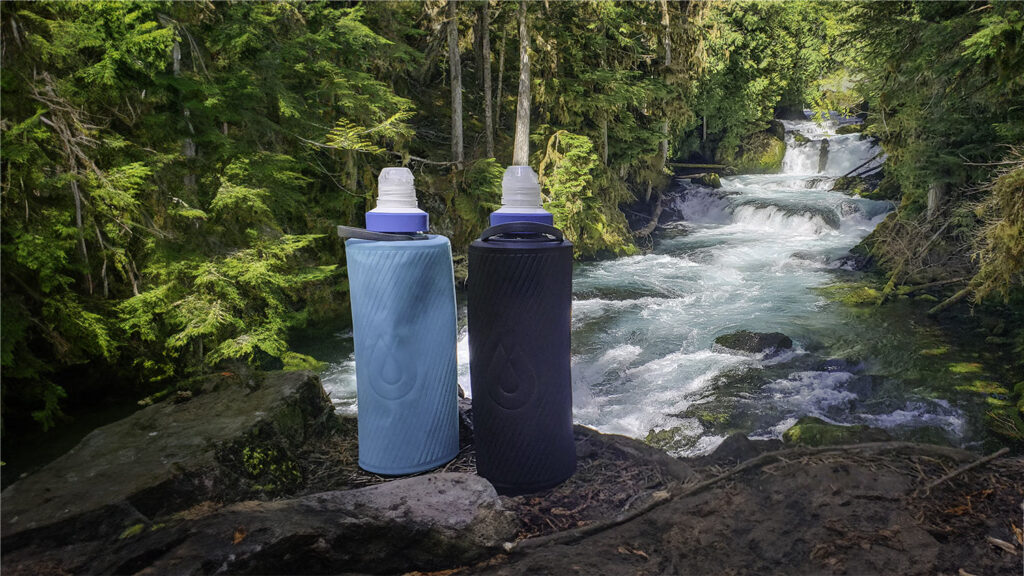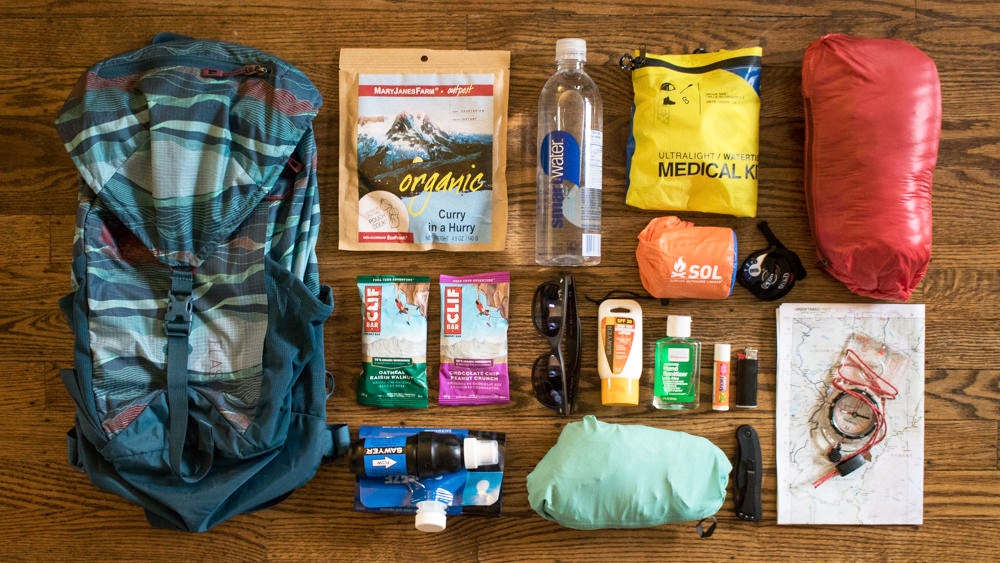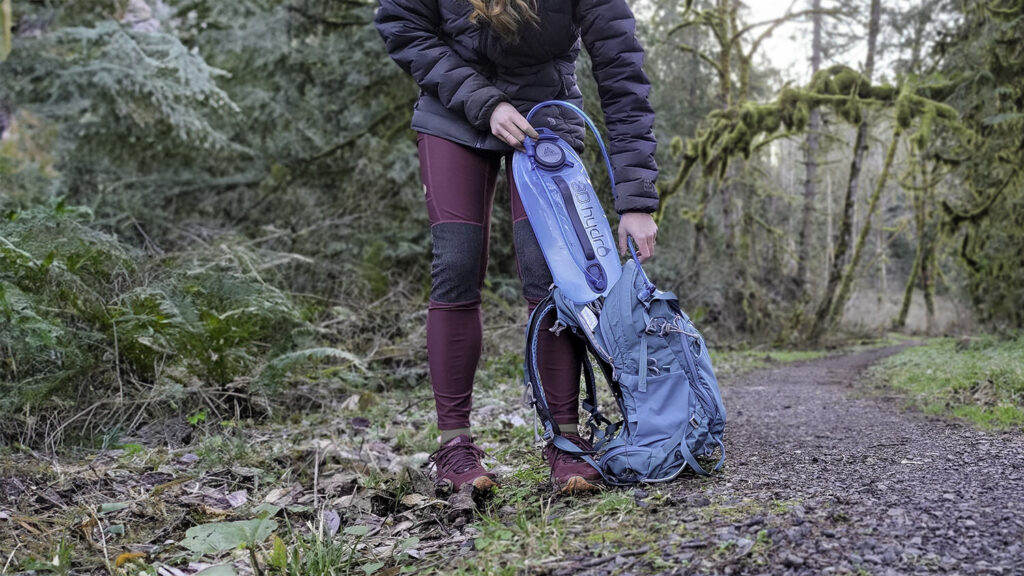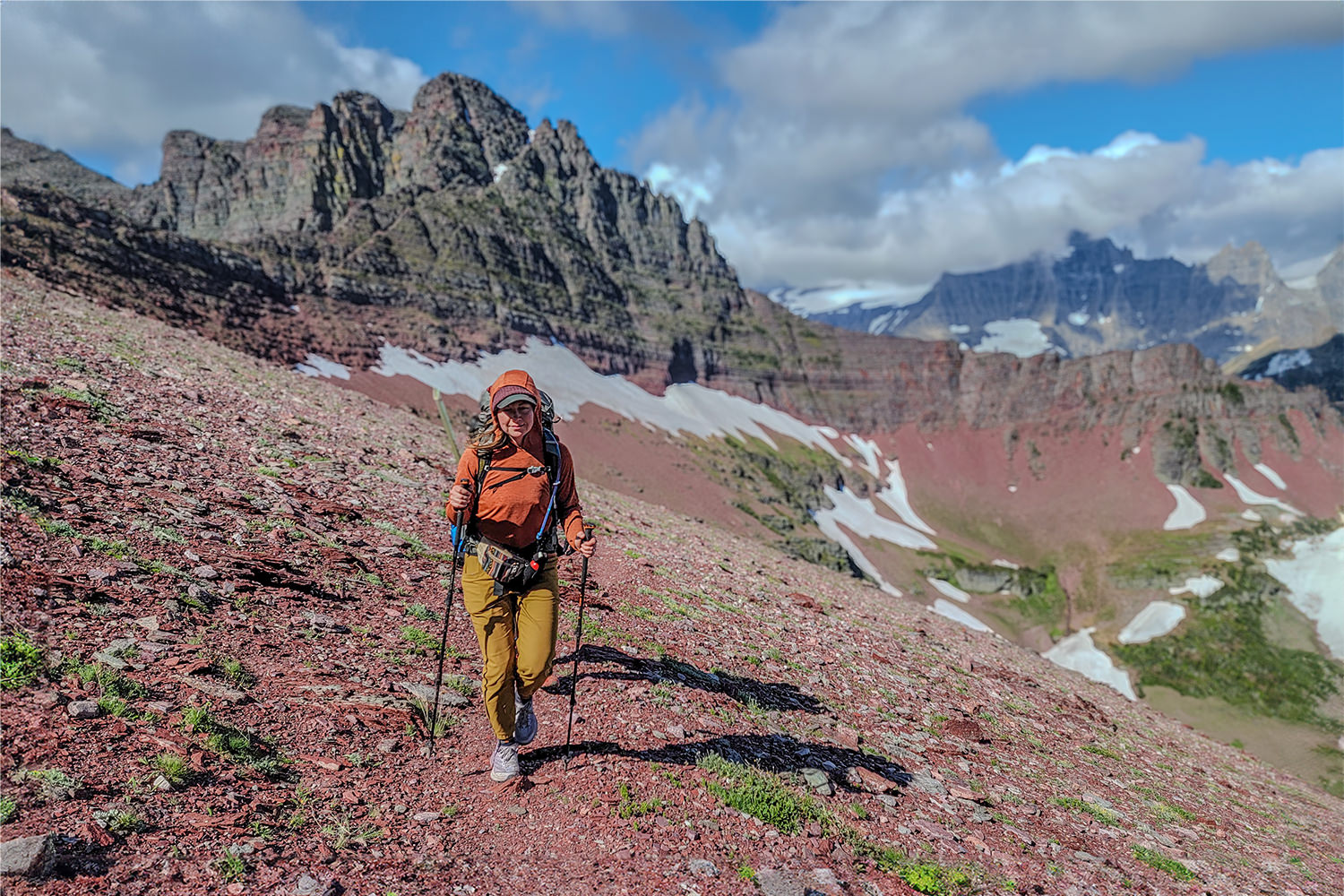
Whether you’re thru-hiking across the country or heading out on a quick weekend jaunt, trekking poles can add a lot of stability and comfort to your hike.
We’ve done the research on 40 sets of poles and used dozens of different models over 20,000 miles of hiking and backpacking. We’ve analyzed each set in terms of the most crucial characteristics like grip comfort, weight and packability, durability, and adjustability. Our side-by-side testing has led us to the best of the best trekking poles from brands like Black Diamond, LEKI, REI, and more.
And for more info, check out some of our other popular gear guides:
Quick Picks for TREKKING POLES
Check out this quick list of our favorites or continue scrolling to see our full list of the best trekking poles with in-depth reviews.
Best Trekking Poles Overall: Black Diamond Pursuit ($150)
Best Ultralight Trekking Poles: Gossamer Gear LT5 ($195)
Best Budget Trekking Poles: Montem Ultra Strong ($75)
Most Durable Trekking Poles: LEKI Makalu Cork Lite ($150)
Lightweight Carbon Fiber Trekking Poles: REI Flash Carbon ($169)
Best Budget Ultralight Trekking Poles: Zpacks Minimalist ($100)
Highly Packable Utralight Trekking Poles: Black Diamond Distance Carbon Z ($190)
Best Trekking Poles for Winter & Rough Terrain: Black Diamond Alpine Carbon Cork ($200)
Ultralight Trekking Poles at an Affordable Price: Fizan Compact 3 ($70)
What’s new
We’ve done quite a bit of long-term testing with our current favorites and also introduced some new pics into the mix
- The Black Diamond Pursuit poles take the number one spot for their low weight, packability, and comfortable cork grips.
- We also added the LEKI Makalu Lite as our most durable trekking pole pick.
- We added some new findings to our review of the Fizan Compact 3 poles that led us to move them down the list considerably.
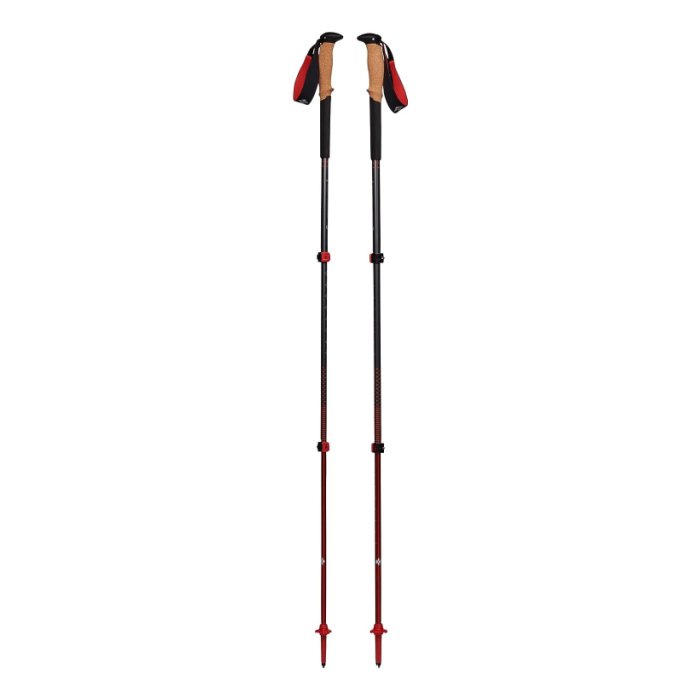
Black Diamond Pursuit
Best Trekking Poles Overall
Price: $150
Weight (Pair): 1 lb. .4 oz.
Shaft Material: Aluminum
Grip Material: Cork
Collapsed Length: 22.8 in.
Pros
- Cork grips wick sweat
- Durable
- Lightweight
- Built-in adjustment tool
- Size options
- Small collapsed length
- Comes with two basket sizes
Cons
- Expensive
The Black Diamond Pursuit trekking poles are some of the lightest aluminum cork-handled trekking poles we’ve ever tested. This means you get the best of all worlds – the comfort of cork, the durability of aluminum, and not much added weight over carbon fiber poles.
We’ve always been big fans of trekking poles with cork handles because the porous material pulls away sweat to help prevent blisters. While cork adds a little weight over foam, this tradeoff is well worth it when hiking long days in the sun.
A feature that really sets the Pursuits apart is the built-in tool that makes adjusting your poles in the field super easy. During our first test hike with these poles, a late-season backpacking trip around Broken Top Mountain in Oregon, the big temperature swings between night and day caused the Pursuits to loosen and slip a bit. The handy adjustment tool – which is built into the shaft of one of the poles – made it so quick and easy to tighten the flick locks and carry on.
The aluminum shafts of the Pursuits are a durable choice and we recommend them for hikers who tend to rely on their poles a lot for support.
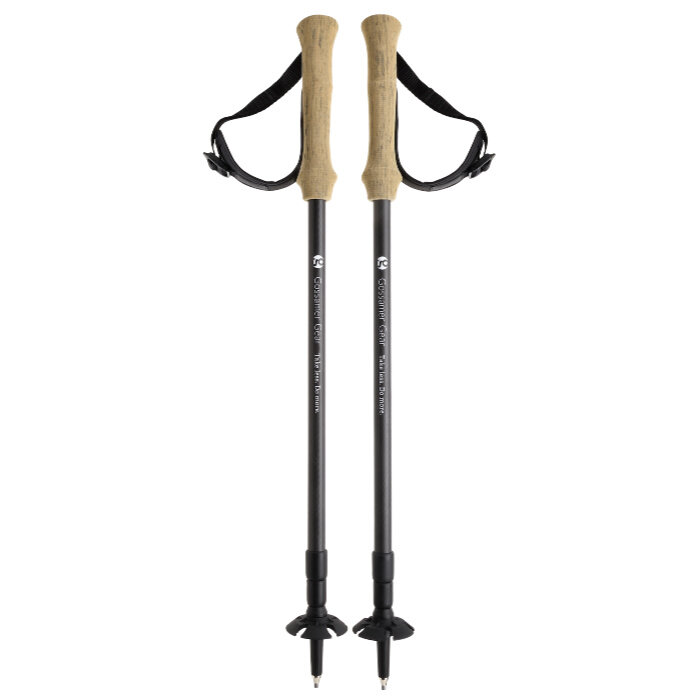
Gossamer Gear LT5
Best Ultralight Trekking Poles
Price: $195
Weight (Pair): 10.6 oz.
Shaft Material: Carbon Fiber
Grip Material: Foam
Collapsed Length: 23.5 in.
Pros
- Ultralight
- Comfy handles
- Very durable for the weight
- Sections are replaceable
Cons
- Expensive
- Carbon fiber isn’t as tough as aluminum
The Gossamer Gear LT5 poles are our favorite ultralight trekking poles because they’re easy to adjust, the foam handles are comfortable for long hikes, and they’re incredibly durable for the weight.
The LT5s are pretty pricey, but their excellent strength-to-weight ratio makes them worth the cost for anyone covering long distances with a light load. CleverHiker Senior Gear Analyst, Casey Handley, used a pair of LT5s for multiple thru-hikes – including the John Muir Trail, Long Trail, and Arizona Trail – and they’ve still got plenty of distance left in them. On top of that, Gossamer Gear offers replacement sections – top, middle, and bottom – so you can easily (and affordably) swap out broken or worn-down parts instead of buying a whole new set of poles.
Another feature that makes them great for covering long distances is the comfort of the grips. Though they’re cork-colored, the grips are made of a soft foam that wicks sweat and isn’t prone to causing blisters. The wrist straps on the grips have comfy padding and are easy to adjust, but you can also remove them to save more weight.
Backpackers who prioritize keeping their gear load as light as possible will absolutely love these. We haven’t found another set of ultralight poles that offers the same blend of comfort and durability as these.
Full Review: Gossamer Gear LT5
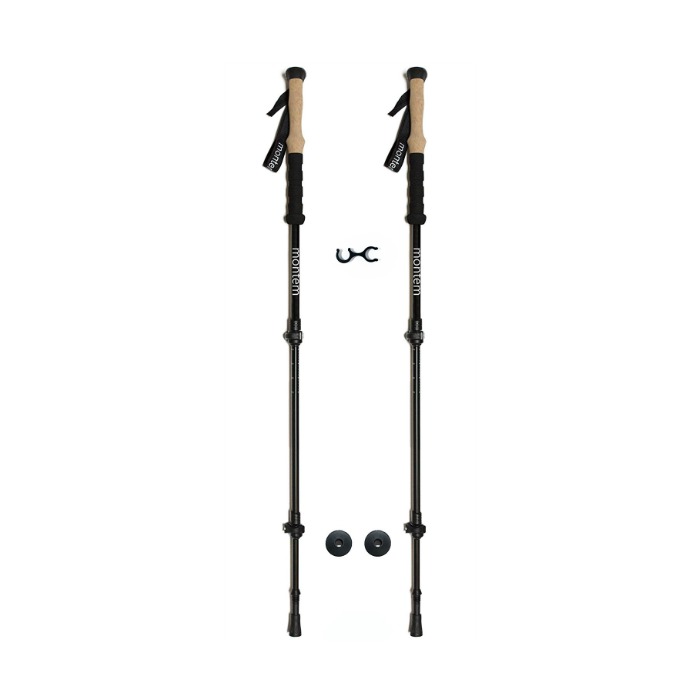
Montem Ultra Strong
Best Budget Trekking Poles
Price: $75
Weight (Pair): 1 lb. 3.2 oz.
Shaft Material: Aluminum
Grip Material: Foam
Collapsed Length: 24 in.
Pros
- Affordable
- Durable
- Fun color options
Cons
- Heavy
- Grips aren’t as comfy for long hikes
The beginner-friendly Montem Ultra Strong poles are a solid budget buy. They’re durable, easy to use, and much more affordable than the more technical poles on this list.
Equipped with a flick lock system, this model is quick and easy to adjust, which is a big perk for hikers who like to change the length of their poles to suit the terrain – shortening for uphill sections or lengthening for downhill.
Budget gear can sometimes mean lower quality, but that’s not the case with these poles. The Ultra Strongs are, as the name would imply, very durable. This makes them a good option for hikers who tend to put more weight on their poles for stability as they’ll hold up well to the added stress. Though this durability comes with some added weight, it’s not a bad tradeoff when you really need a sturdy set.
Due to their approachable price and user-friendly design, the Montem Ultra Strong poles are a great investment for those just starting out on their backpacking gear buying journey.
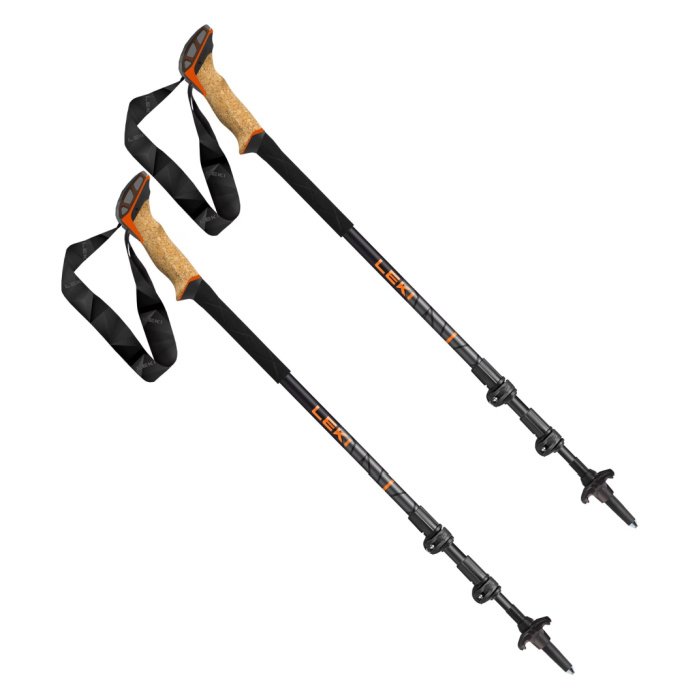
LEKI Makalu Cork Lite
Most Durable Trekking Poles
Price: $150
Weight (Pair): 1 lb. 2 oz.
Shaft Material: Aluminum
Grip Material: Cork
Collapsed Length: 26.3 in.
Pros
- Great value
- Very durable
- Comfy cork grips
- No tools required for adjusting locks
Cons
- Long collapsed length
- A bit heavy
If you’re particularly hard on gear or often find yourself hiking in places off the beaten path, the LEKI Makalu Cork Lite might be just what you need. These sturdy aluminum poles are some of the most durable we’ve ever tested, and their quality construction is evident from cork grip to carbide tip.
While not immediately impressive on paper, the weight of the Makalu Lites is quite low for how solid they are. However, these poles have a longer collapsed length than most others we’ve tested, so they’re not the best choice for hikers who tend to stow them in their packs on flatter sections of trail. Rather, the Makalus are made for hikers who want added support and stability at all times.
While the Makalus aren’t our first choice for longer hikes (although we did test them over a few hundred miles of the Arizona Trail), they’ve still got a lot of great things going for them. They come in at a great price for the quality, their cork handles are very comfortable, and their durability is second to none.
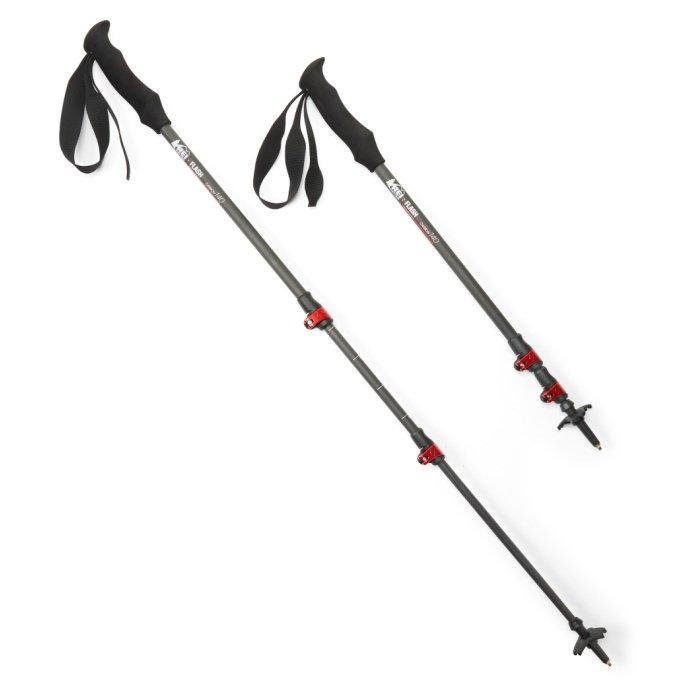
REI Flash Carbon
Lightweight Carbon Fiber Trekking Poles
Price: $169
Weight (Pair): 13.6 oz.
Shaft Material: Carbon fiber & aluminum
Grip Material: Foam
Collapsed Length: 25 in.
Pros
- Good value
- Ultralight
- Durable for the weight
Cons
- Longer collapsed length
The REI Flash Carbon trekking poles strike an exceptional balance between price, weight, and durability.
These poles are made from a combination of carbon fiber and aluminum, so they retain most of the benefits of both materials. The aluminum provides strength and snap resistance, while the carbon fiber content keeps the weight lower than most all-aluminum poles.
The only real drawback of the Flash Carbons is that they don’t pack down very small, so they may not be the most convenient choice for hikers who tend to keep their poles stowed for the majority of their hikes. But they also come in a lighter Compact version for those who want a set that packs down a bit smaller (23 inches) and don’t need their poles to be longer than 120 centimeters.
Their simple and secure flick locks and comfortable foam hand grips make them a solid choice for long days on the trail. And their ease of use positions them as a nice upgraded option over the Montem Ultra Strong for beginner backpackers.
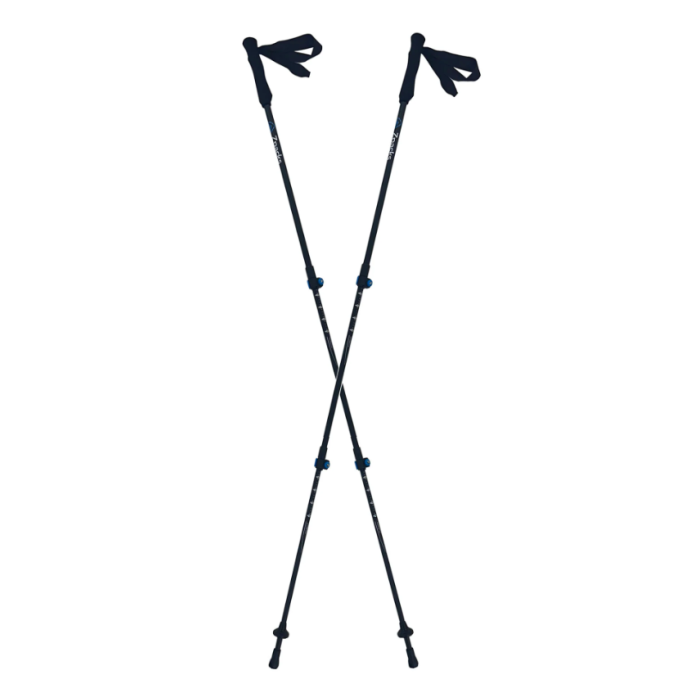
Zpacks Minimalist
Best Budget Ultralight Trekking Poles
Price: $100
Weight (Pair): 11.7 oz.
Shaft Material: Carbon Fiber
Grip Material: Foam
Collapsed Length: 24.5 in.
Pros
- Affordable
- Ultralight
- Sections are replaceable
Cons
- Not as durable
- Longer collapsed length
- Grips are a bit less comfortable
The Zpacks Minimalist poles offer significant savings over other models in their weight class. And for those who like to hike with just one pole, the savings are even bigger. The Zpacks Minimalists are some of the only trekking poles on the market sold as singles, and just one will only run you $60.
On top of the already great price, the lower sections and components are also replaceable once they’ve reached the end of their life. This saves money down the road since you’ll only need to swap out worn-out components instead of the entire set of poles.
The Minimalists are among the lightest trekking poles on the market thanks to their carbon fiber construction and pared-down design. These poles cut out all unnecessary weight with more modestly shaped grips, slightly thinner shafts, and an unpadded wrist strap. While we’re all for saving weight, these feature cuts are what keep us from choosing them over the Gossamer Gear LT5s.
We would prefer the grips to be shaped a little more aggressively to add comfort on long days, and the thin shaft material feels questionable for long-term durability. We tested these poles over a few hundred miles on the Arizona Trail, and – while they held up well – we wouldn’t want to put our full weight on them in precarious situations.
Still, the Minimalists are great for those who use their poles more for balance and pacing than support.
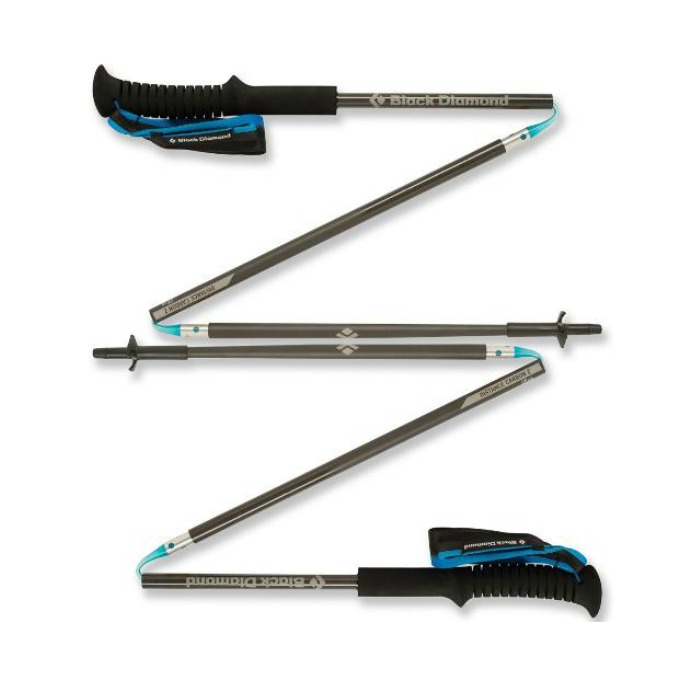
Black Diamond Distance Carbon Z-Pole
Most Compact Ultralight Trekking Poles
Price: $190
Weight (Pair): 9.8 oz.
Shaft Material: Carbon Fiber
Grip Material: Foam
Collapsed Length: 13-17 in.
Pros
- Ultralight
- Small collapsed length
Cons
- Expensive
- Fixed length
- Not as durable
At just 9.8 ounces, the Black Diamond Distance Carbon Z-Poles are the lightest trekking poles on our list and also feature the smallest packed size.
The Distance Carbon Zs achieve this low weight with their carbon fiber construction and fixed length (though since you’re not able to adjust the length, it’s important to make sure you get the right size). If you’re not sure what size to get, it’s a good idea to try a pair of trekking poles in a store first. The correct size will leave your arm bent at a 90-degree angle while holding the extended poles in front of you. Hikers who use trekking poles to support their shelter should also consider whether or not these poles will be the correct length to serve their purposes.
If the lack of adjustability is a dealbreaker for you, these poles also come in an adjustable FLZ version. It’s even more expensive, though, so we recommend choosing a different set if you don’t need the tiny packed size.
The Distance Carbon Zs are the best choice for hikers who only use poles occasionally while hiking since the low weight and tiny packed size will make a smaller impact when stowed in your pack than other poles.
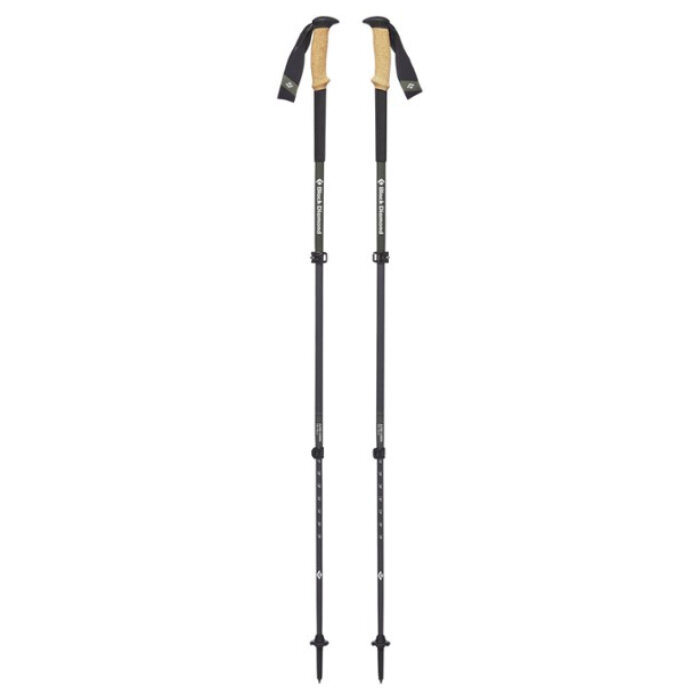
Black Diamond Alpine Carbon Cork
Best Trekking Poles for Winter & Rough Terrain
Price: $200
Weight (Pair): 1 lb. 1.1 oz.
Shaft Material: Carbon Fiber
Grip Material: Cork
Collapsed Length: 24 in.
Pros
- Very durable
- Comfy cork grips
- 4-season design
Cons
- Expensive
- Heavy
- Longer collapsed length
The Black Diamond Alpine Carbon Cork (men’s / women’s) are super tough 4-season poles that are reliable no matter what the trail throws at you.
Their quality is evident in every aspect of the build. The flick locks are made of metal instead of more common plastic. The beefed-up carbon fiber shafts make them noticeably heavier than other carbon fiber poles – meaning you get the no-flex benefits of carbon without the hit to durability. And the cork handles have an ergonomic shape and are comfortable to hold.
CleverHiker’s Managing Editor, Ben Applebaum-Bauch, has used these poles for over 6,000 miles of thru-hikes – including his CDT trek – and they’re still going strong. So even though they aren’t the lightest on the market, their burly design makes them a reliable option for hikers taking on tough trails.
The Alpines are also great for winter fun. Their stiff design and glove-friendly flick locks make them a reliable choice for snowy pursuits, like snowshoeing. So they’re a great investment for hikers looking for a do-it-all set of trekking poles.
The Alpine Carbon Corks are the poles we recommend for adventurers looking for a set to take them from rugged summer hikes to winter ski touring.
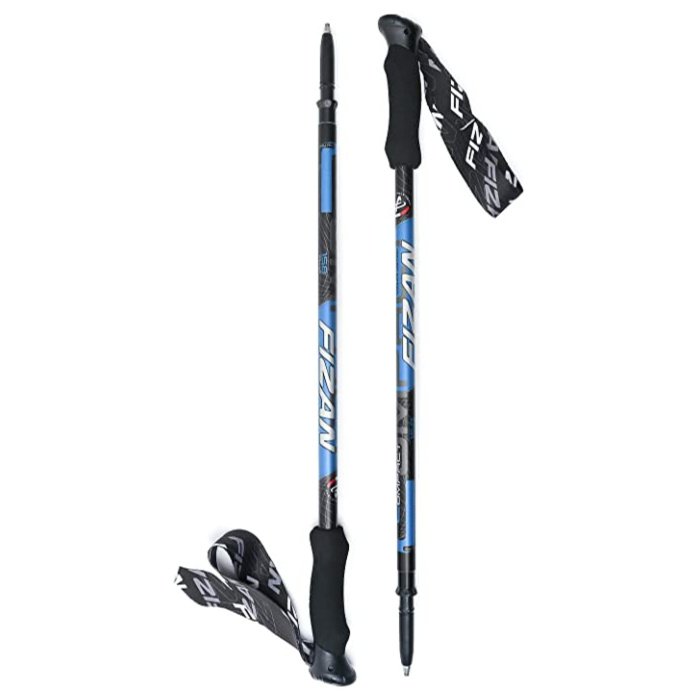
Fizan Compact 3
Most Affordable Ultralight Trekking Poles
Price: $70
Weight (Pair): 11.2 oz.
Shaft Material: Aluminum
Grip Material: Foam
Collapsed Length: 22.8 in.
Pros
- Affordable
- Ultralight
- Small packed size
- Comes with multiple basket sizes
Cons
- Not as durable as other aluminum poles
- Segments can get stuck in the collapsed position
The Fizan Compact 3 poles cost a fraction of the price of other models in their weight category, so they’re an attractive choice for budget-conscious ultralighters.
Unlike many other trekking poles in the sub-one pound range, the Compact 3s are constructed with aluminum instead of carbon fiber. This gives them a slight advantage when they’re taking the force of full body weight since aluminum is more forgiving than carbon fiber. That said, the aluminum of these poles seems especially thin, so don’t expect the same level of durability you’d get from a heavier pair.
At first glance, they are practically identical to the Gossamer Gear LT5s. But there are two key differences to consider before going with the more affordable Compact 3s. First, there aren’t catches at the tops of the pole segments, so it’s surprisingly easy to collapse the Compact 3s too much which can make it difficult to extend them again. Second, any moisture left on them while they’re fully collapsed can cause them to stick closed, which was the fate of both our testing pairs of Compact 3s after about a year and a half of use. So making sure to dry them thoroughly after each trip is key to avoiding this pitfall.
That said – as long as you’re careful to steer clear of that issue – the combination of price and weight on the Compact 3s truly can’t be beat.
Full Review: Fizan Compact 3
Product Comparison Table
| oSort | Product | Price | Weight (Pair) | Shaft Material | Grip Material | Collapsed Length | 0 |
Black Diamond Pursuit View at REI View at Amazon |
$150 | 1 lb. .4 oz. | Aluminum | Cork | 22.8 in. | 1 |
Gossamer Gear LT5 View at Gossamer Gear View at Garage Grown Gear |
$195 | 10.6 oz. | Carbon Fiber | Foam | 23.5 in. | 2 |
Montem Ultra Strong View at Amazon |
$75 | 1 lb. 3.2 oz. | Aluminum | Foam | 24 in. | 3 |
LEKI Makalu Cork Lite View at REI View at Amazon |
$150 | 1 lb. 2 oz. | Aluminum | Cork | 26.3 in. | 4 |
REI Flash Carbon View at REI |
$169 | 13.6 oz. | Carbon fiber & aluminum | Foam | 25 in. | 5 |
Zpacks Minimalist View at Zpacks |
$100 | 11.7 oz. | Carbon Fiber | Foam | 24.5 in. | 6 |
Black Diamond Distance Carbon Z-Pole View at REI View at Amazon |
$190 | 9.8 oz. | Carbon Fiber | Foam | 13-17 in. | 7 |
Black Diamond Alpine Carbon Cork View at REI View at Amazon |
$200 | 1 lb. 1.1 oz. | Carbon Fiber | Cork | 24 in. | 8 |
Fizan Compact 3 View at Amazon |
$70 | 11.2 oz. | Aluminum | Foam | 22.8 in. |
|---|
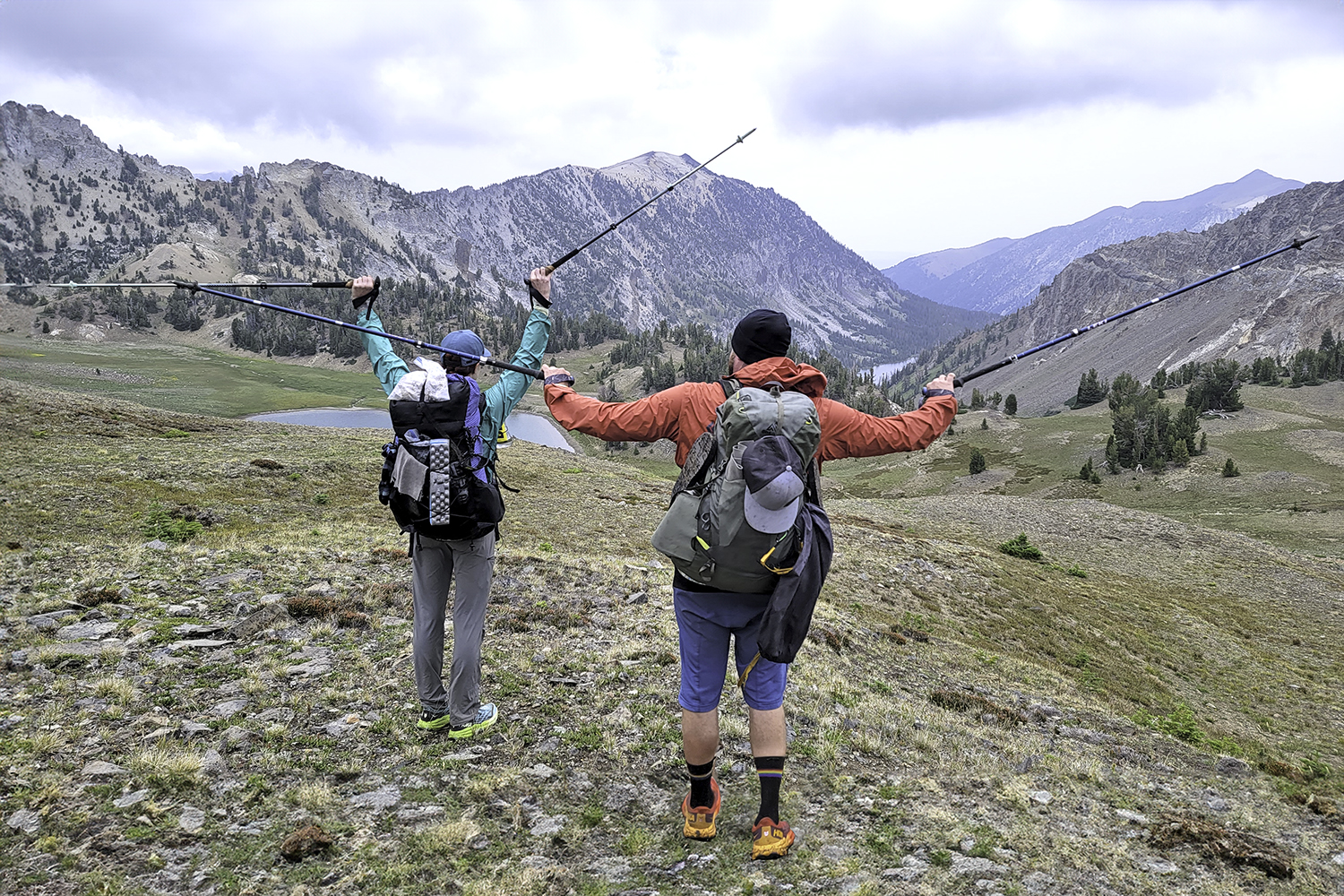
What’s Most Important to You in a Pair of Trekking Poles?
PRICE
Best budget trekking poles
Best mid-range trekking poles
Best high end trekking poles
WEIGHT
Best ultralight trekking poles
Best lightweight trekking poles
DURABILITY
Best durable trekking poles
GRIP
Best cork-handled trekking poles
Best foam-grip trekking poles
PACKABILITY
Most compact trekking poles
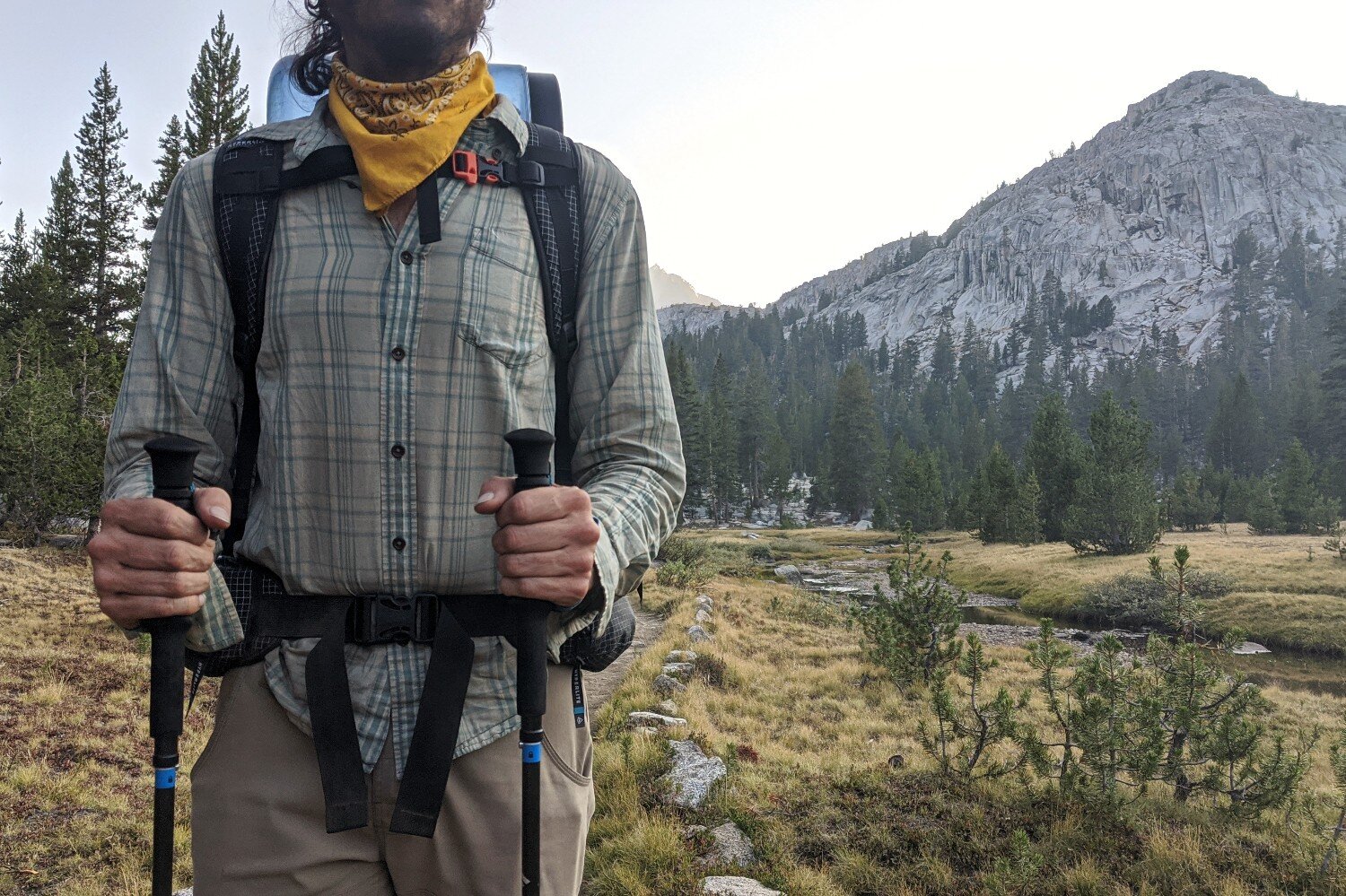
How to Choose Trekking Poles
Below, we break down some important things to consider when making a new trekking pole purchase. If you’re still unsure about whether or not hiking with poles is right for you, check out our post on the Pros and Cons of Hiking with Trekking Poles.

MATERIALS
The two most common materials used for trekking poles are aluminum and carbon fiber. Carbon fiber poles are far lighter, but they’re also more expensive and generally more likely to break if bent the wrong way with great force. Aluminum poles are heavier, but they’re more economical and likely to bend instead of snapping under pressure. Some poles combine both materials, using an aluminum lower shaft with a carbon fiber upper.
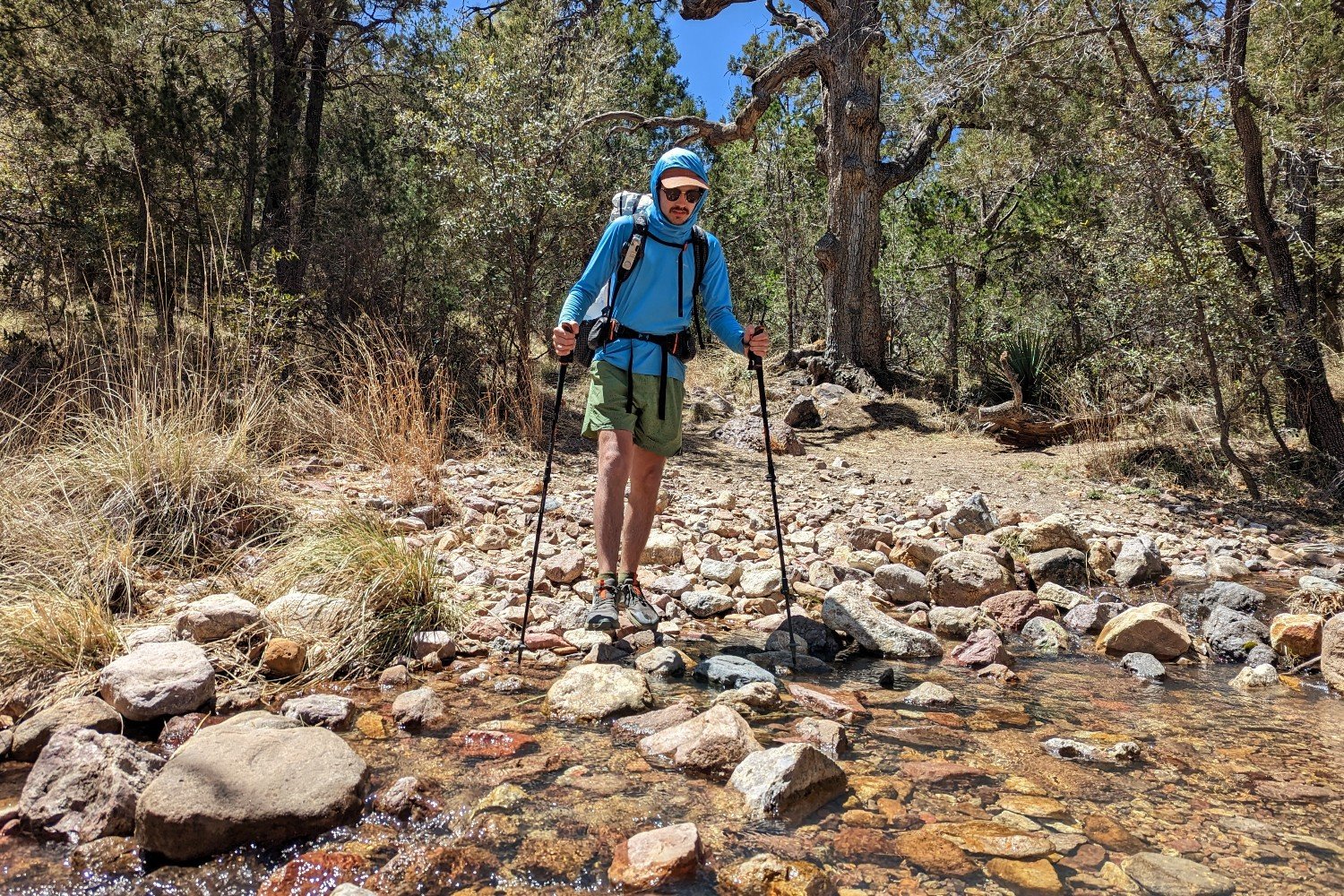
PRICE
Spending more for a quality pair of trekking poles that you can trust won’t crack or split is best since you may need to put your body weight on them in tricky situations. You can find a reliable pair with an affordable price tag, but you’ll typically sacrifice some features – like comfier grips and smaller collapsed length – with cheaper poles.
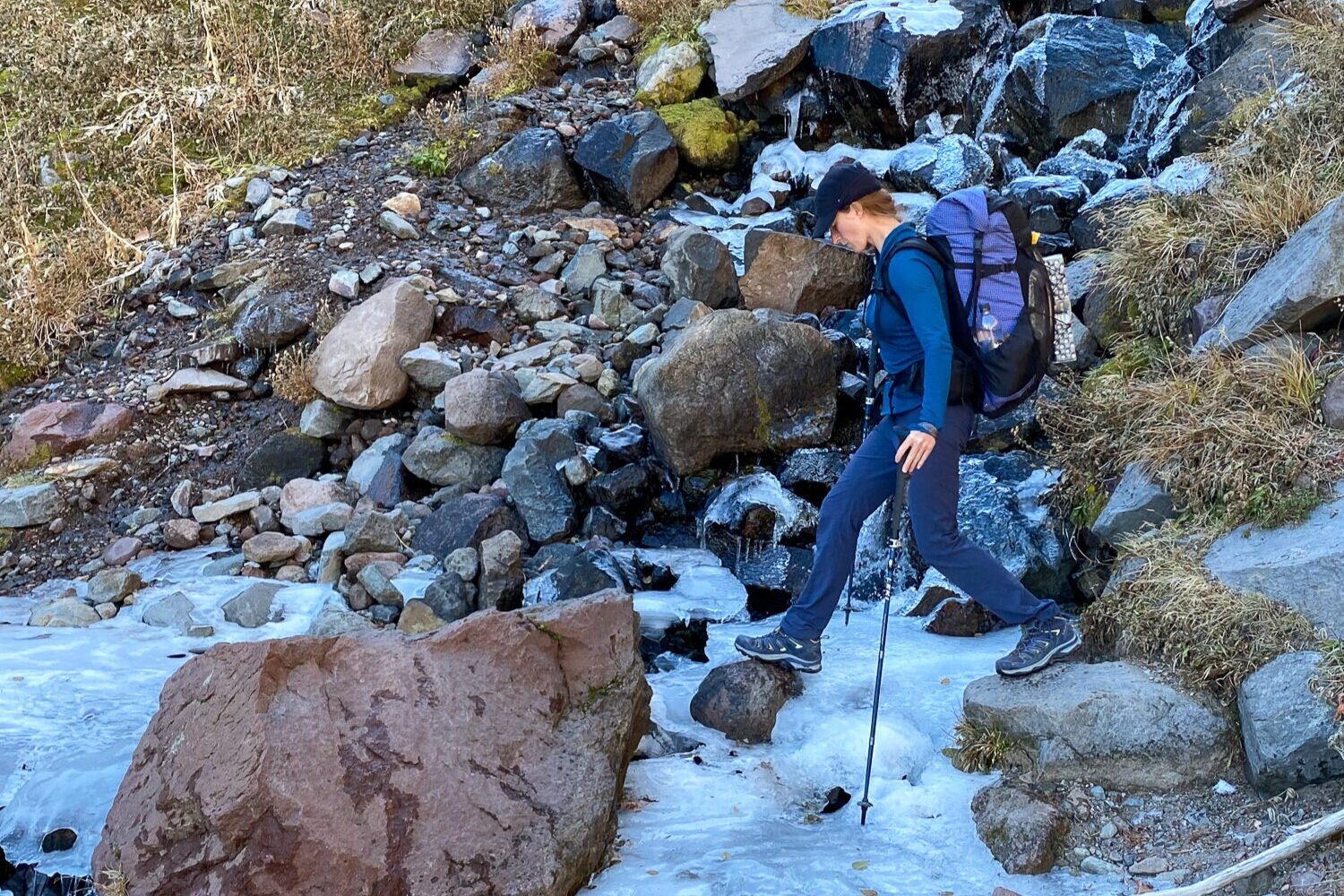
WEIGHT
Weight is important when determining the best trekking poles for your needs since the ounces matter as you’re lifting your arms potentially tens of thousands of times a day.
We prefer to hike with ultralight trekking poles when backpacking to save energy while hiking and to lessen the impact on our pack weight when we need to stow our poles on trail.
If you typically only go on short day hikes or you do a lot of winter trekking, a heavier and more durable pair of poles may be more appealing since they’ll last a long time.

DURABILITY
When you’re crossing a fast-moving stream, balancing on a narrow ridge, or plunging your poles into crusty snow, it’s important to know that they’ll support you. Though this isn’t a hard and fast rule, carbon fiber models are lighter and more energy efficient, but they tend to be less durable over the long run. Aluminum poles are heavier, but they’re usually the more durable option and will bend before failing completely.
Some poles combine both materials, using an aluminum lower shaft with a carbon fiber upper to give the benefits of both.

POLE DESIGN
Telescoping
Telescoping trekking poles are the most common option. They usually consist of two or three sections that nest into each other with a locking mechanism to hold them in place when extended. They’re highly adjustable and can pack down small.
Folding
“Z-type” folding trekking poles usually have three sections that fold to roughly 1/3 of their full length. Held together by an internal tension cord, each section unfolds to create a single shaft when locked into place (similar to a tent pole). Though they pack down small and are often lighter than telescoping poles, most models are not length adjustable. Some folding trekking poles will have one telescoping section, which will allow you to adjust the length of the pole.
Fixed
The least common type of trekking poles on the trail is fixed-length, straight shaft trekking poles. They’re not adjustable and don’t collapse making them difficult to stow away when not in use. Due to their storage impracticality, we don’t really recommend fixed poles for hiking.
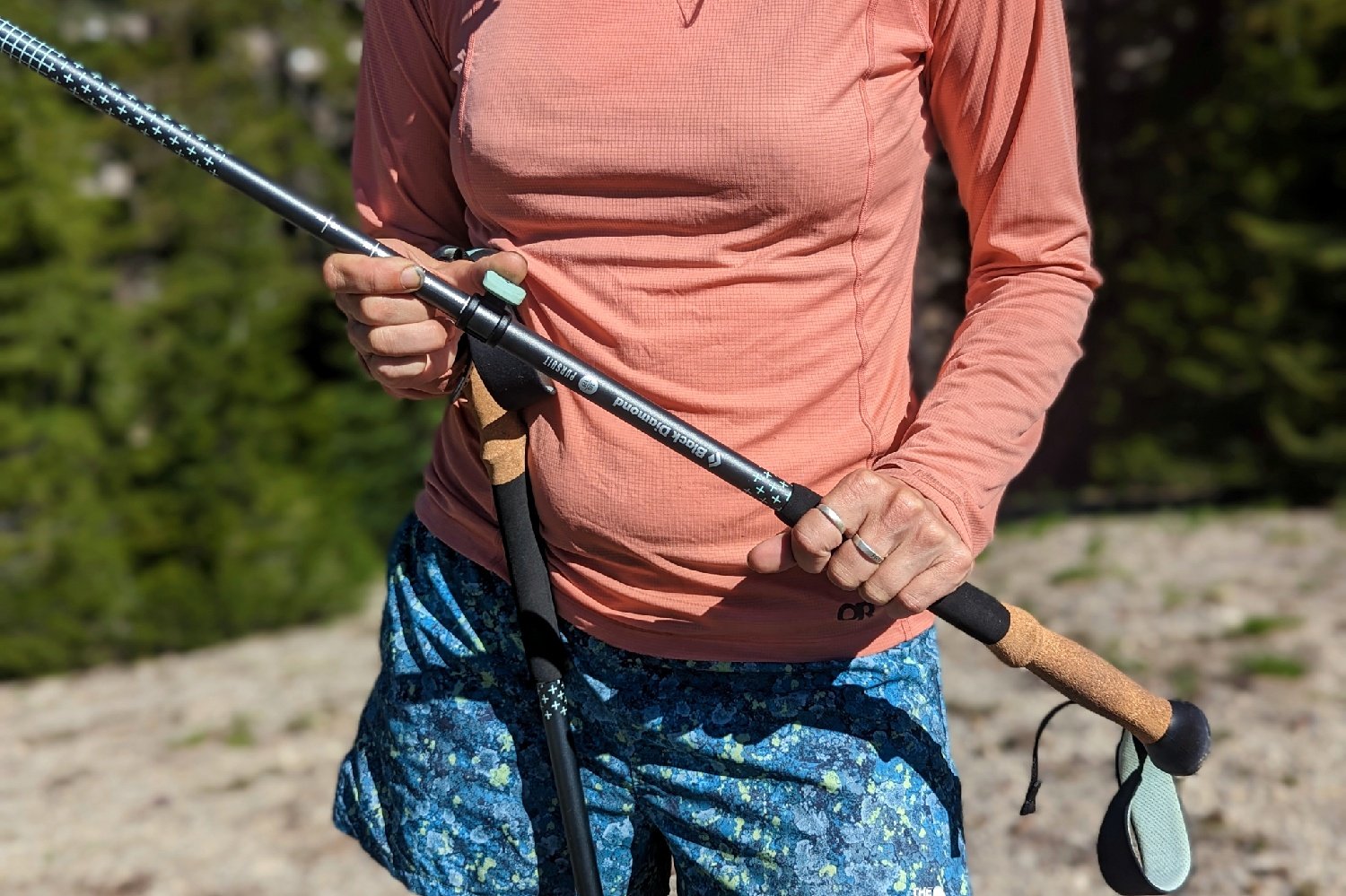
LOCKING SYSTEMS
Trekking poles have either an internal or external locking system to hold the pole’s sections in place. Internal locking systems usually employ a “twist lock,” which expands a small bracket inside the poles when twisted to hold the sections in place. External locking systems, or “flick locks,” use a lever to put pressure on the shaft and hold both sections in place. Twist locks are a bit more complicated than flick locks, so they tend to have a slight learning curve and aren’t as easy to repair in the field. Flick locks are typically more reliable over time, but we’ve had long-term success with poles using both locking methods.
GRIPS
Trekking pole grips create friction against your hands that can lead to sore spots or even blisters, so it’s important to choose poles that feel comfortable. Most trekking pole grips are made from either cork or foam. Cork wins by far for durability and comfort, while foam is usually more affordable but tends to break down a bit quicker and can lead to clammy hands.
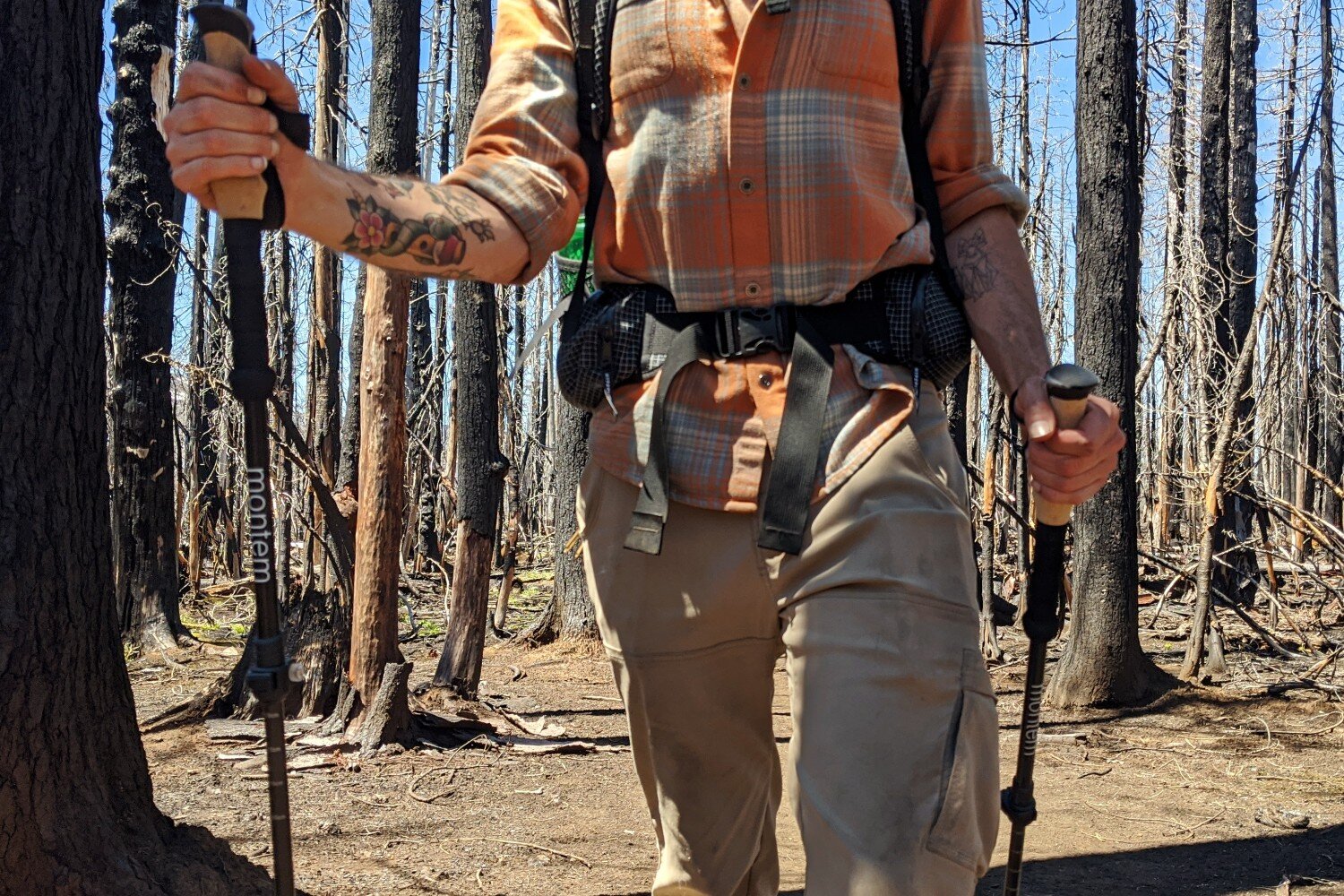
STRAPS
To use the straps correctly, your hand should enter from below before grabbing the grip. This will create a loop around the back of your hand with two sections of strap running through your palm. This method allows you to put a lot of pressure from your upper body on the pole without needing to white-knuckle the hand grip. Straps are often made of nylon webbing, which can produce chafing. Fleece or soft chamois straps tend to be more comfortable, but they may make your hands sweat in hot weather.
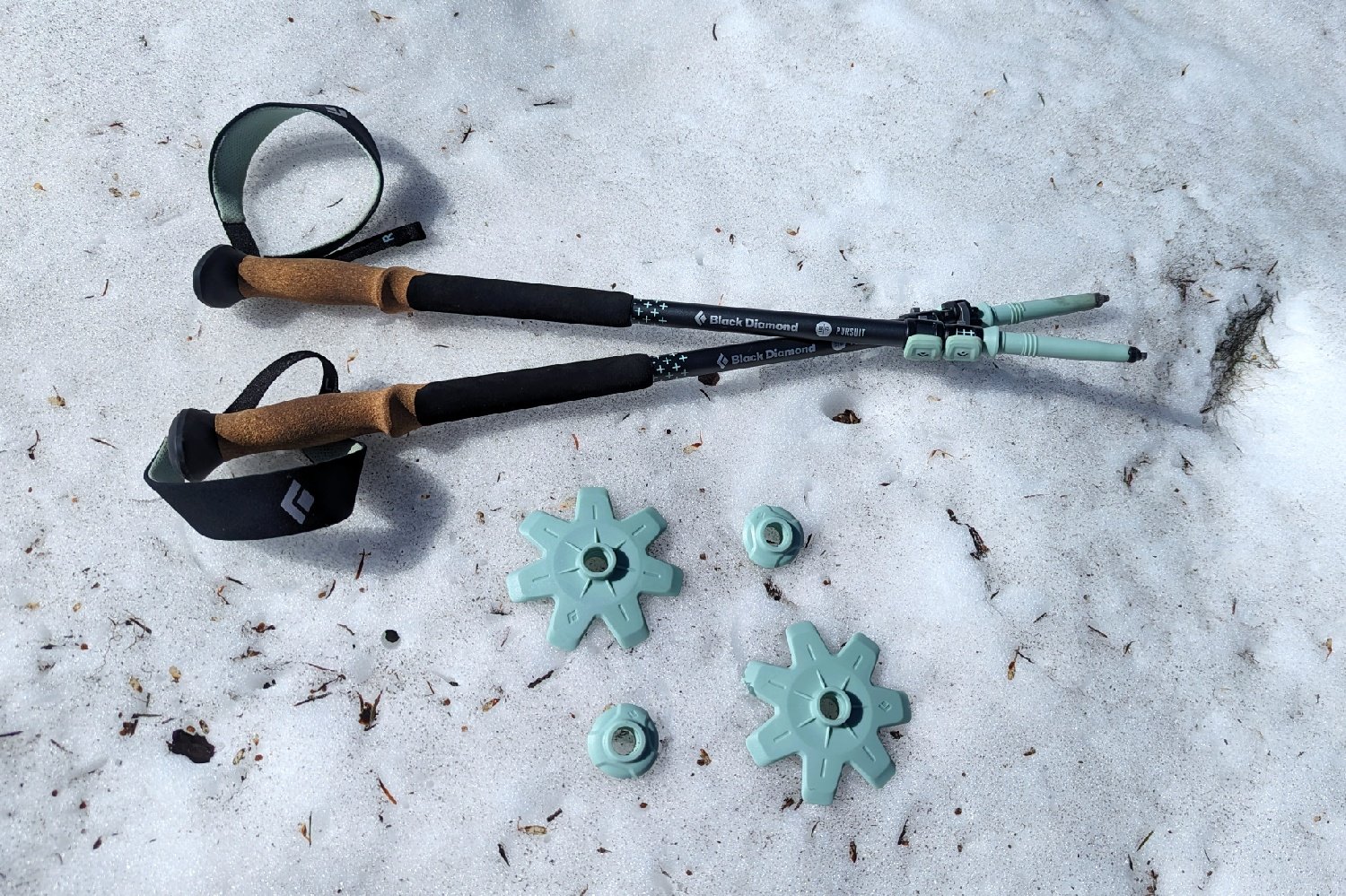
BASKETS
Many poles come with removable baskets (a wide circular plastic section, like on ski poles) near the tips. Their main purpose is to keep the poles from driving too deep in snow, sand, or mud.
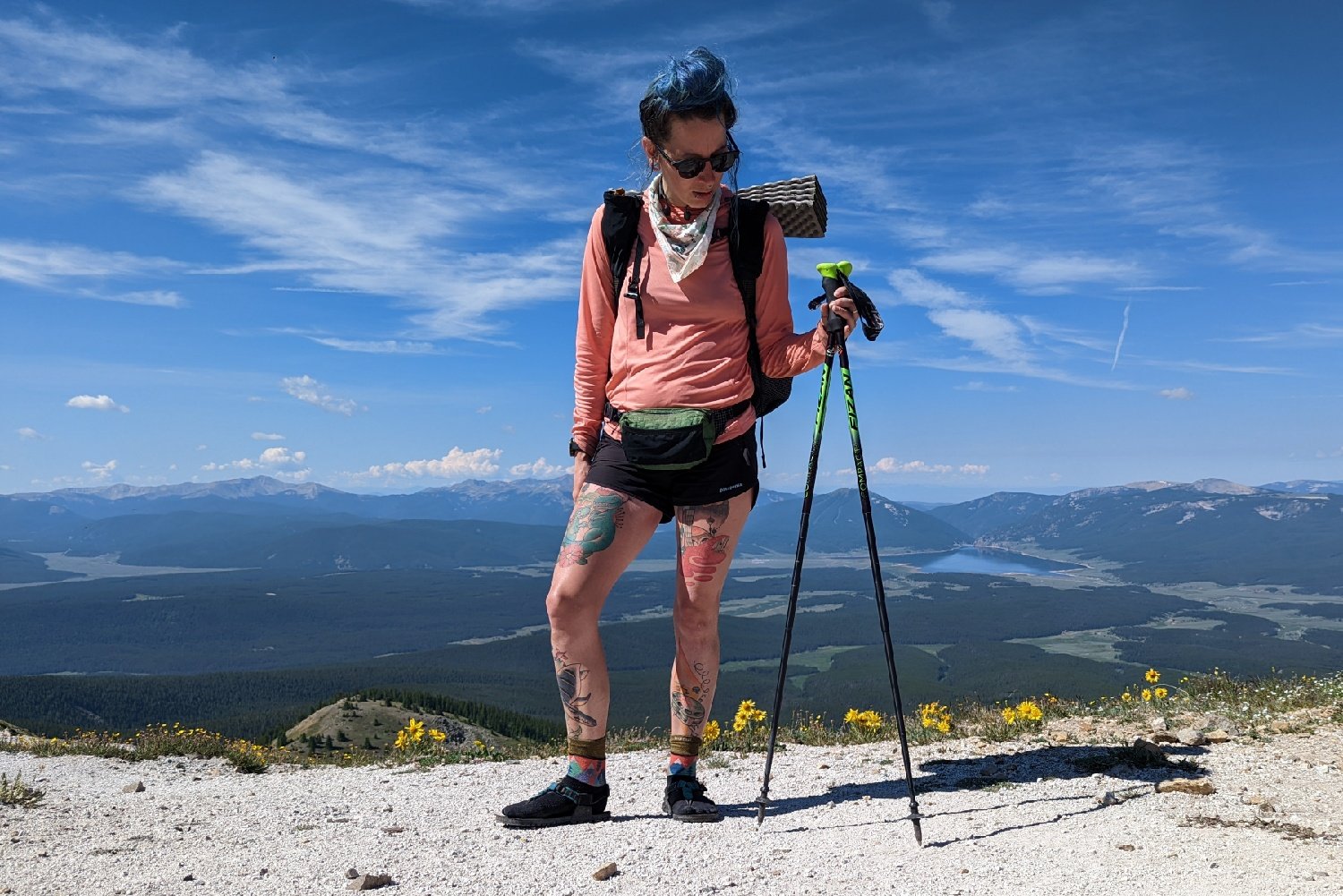
TIPS
Pole tips are usually comprised of a plastic body that holds a durable carbide point at the end. They’re designed to increase stability and traction by biting into dirt, rock, and ice. To maintain optimal functionality, tips should be replaced every 1,500-2,000 miles or so.
SHOCK ABSORBERS
Shock absorbers are small, spring-like mechanisms near the tips of poles that help reduce the impact of striking the ground. Internal shock absorption systems are more common on high-end poles and will increase price and weight. Some people love the cushion they provide, but we generally avoid them. The springs in them create a less secure pole plant and can make ascents a bit more difficult due to the springs absorbing some of your uphill push. They can also be somewhat squeaky, which can get annoying after a full day on the trail.

ADJUSTMENTS
When properly adjusted, your arms should form a 90-degree bend when the poles are held at your sides with their tips on the ground. It’s important to make sure your poles are adjusted properly and feel comfortable, as you can easily stress your neck, shoulders, and wrists with poles set at an improper height.
When heading uphill, you may want to shorten your poles about 5 to 10 cm. to provide better planting and traction. With slightly shorter poles, you should be able to maintain uphill momentum. When heading downhill, you can lengthen your poles 5 to 10 cm. to help maintain solid footing and stability.
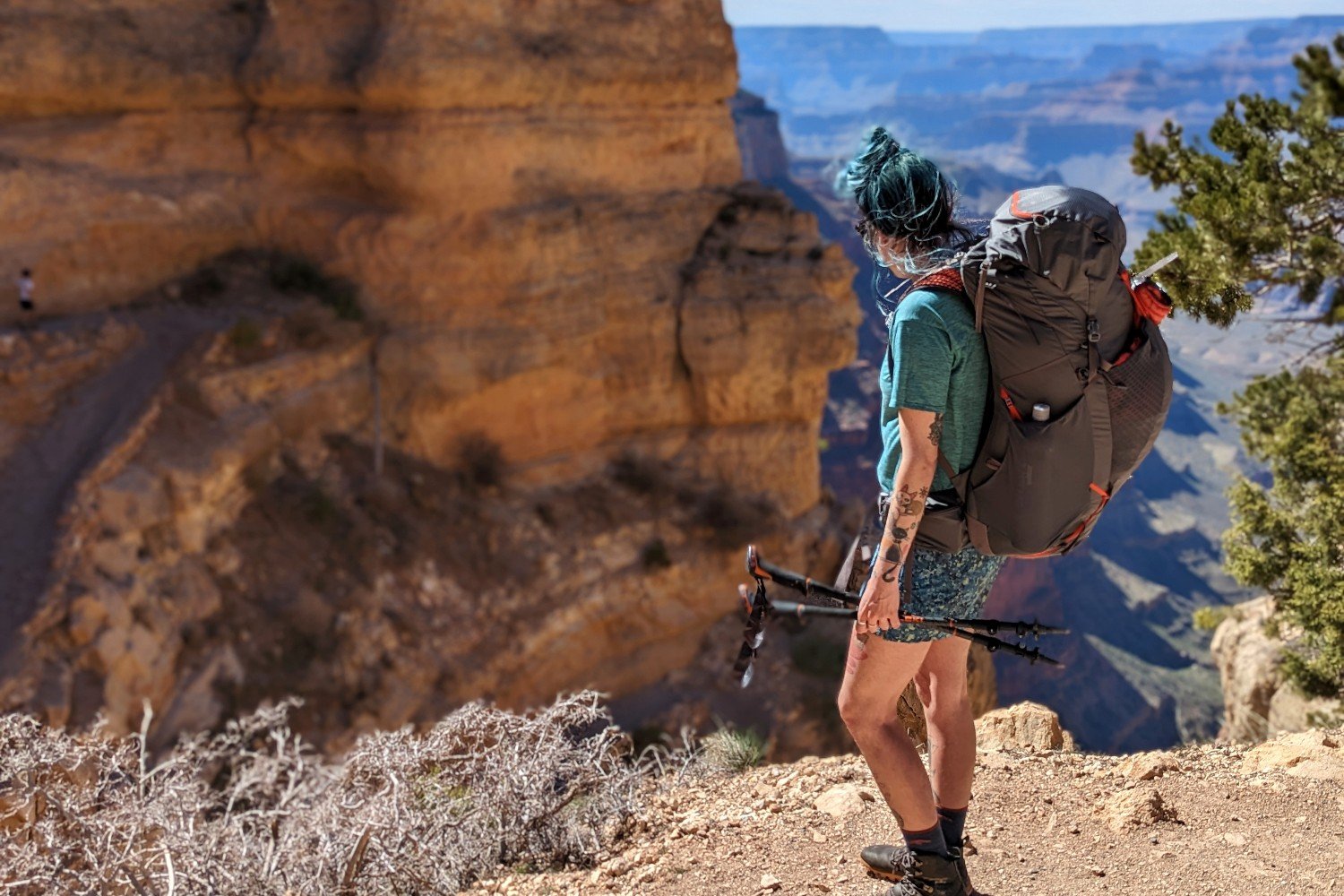
GENDER SPECIFIC POLES
Some brands offer gender-specific poles, but that mostly amounts to tweaks in color and pole length. The majority of trekking poles are unisex and work equally well for men and women. We recommend buying the ones that fit you best.
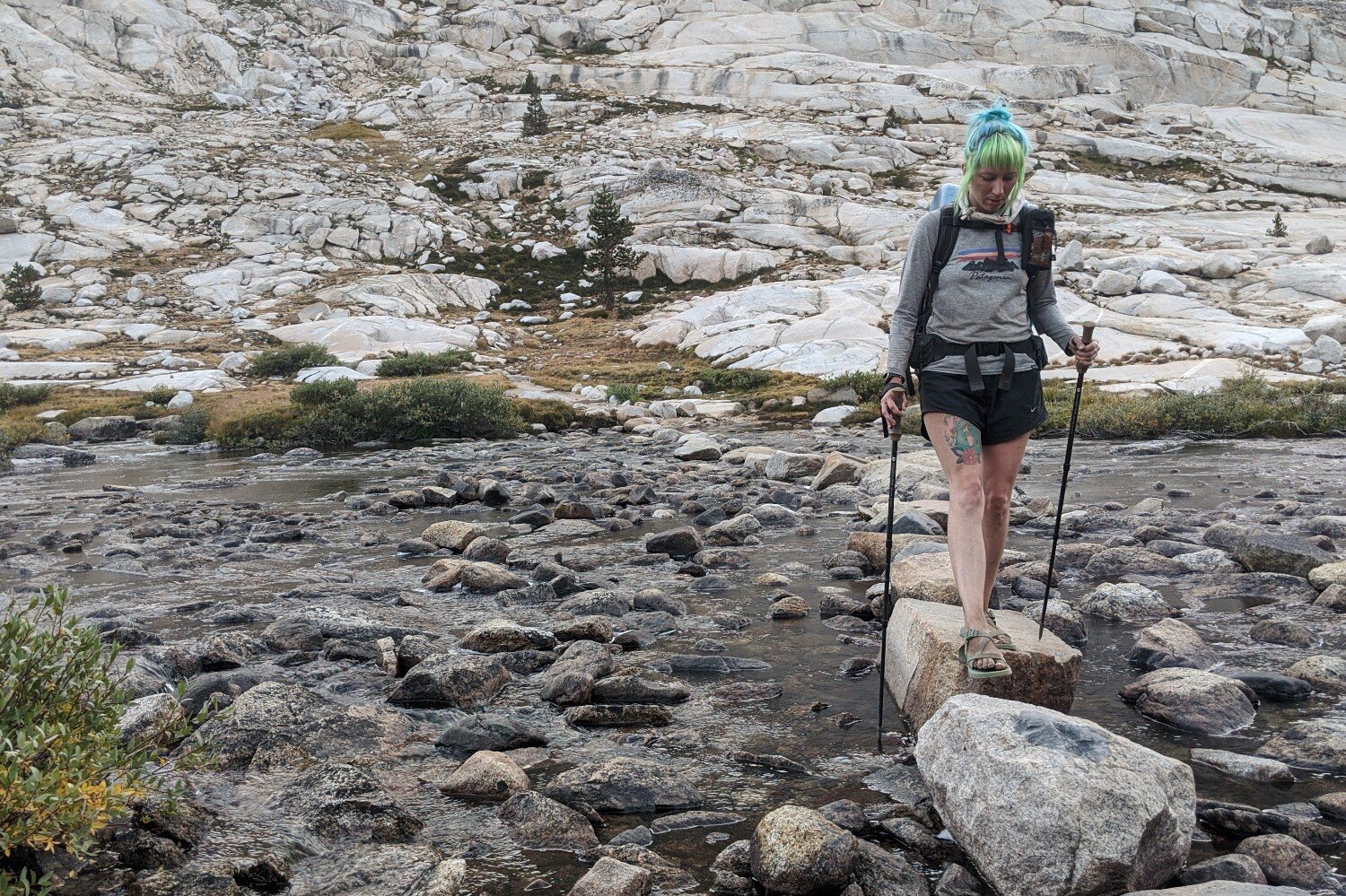
Trekking Poles Video
As part of our Lightweight Backpacking Gear Basics video series, we put together this video on footwear and trekking poles. Some of our feelings have changed a bit in the years since the making of this video, but there’s still a lot of useful info in there. If you just want trekking pole info, skip to minute 3:40.
Watch the video here.
